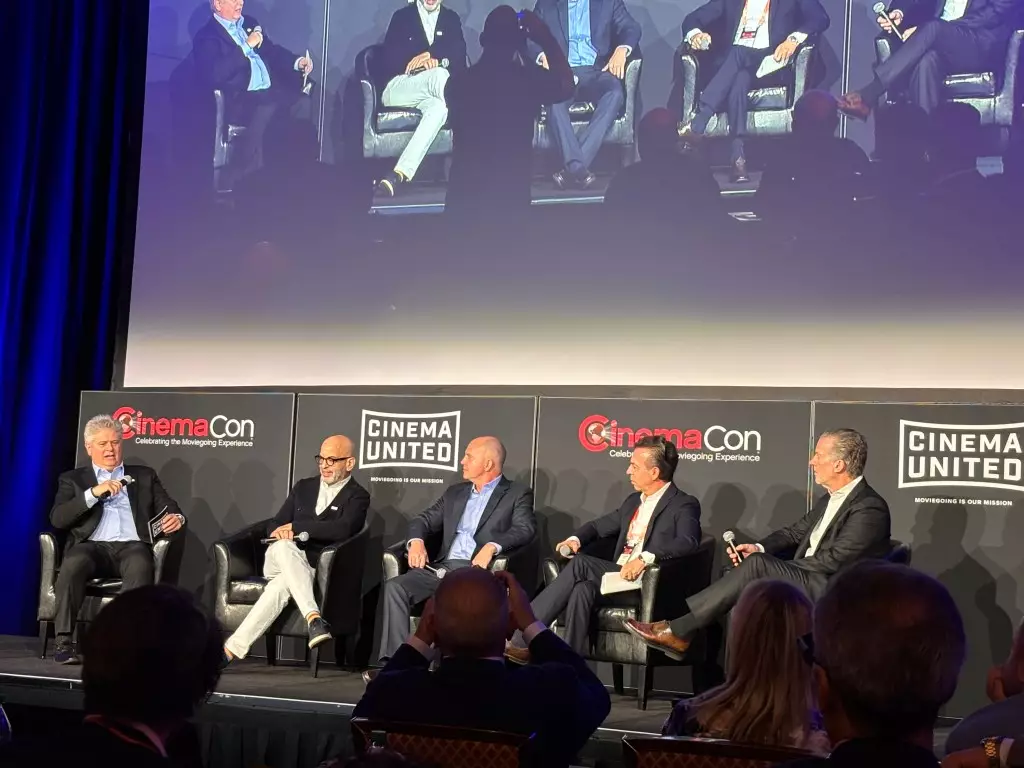The landscape of Hollywood is evolving at an alarming rate, and not for the better. Jeff Goldstein, the president of Global Distribution for Warner Bros. Pictures, paints a dire picture of an industry plagued by skyrocketing production and marketing costs. In an era when building anticipation for a film is as vital as the film itself, the economic models that once served Hollywood are becoming obsolete. The notion that technology can instantaneously broadcast audience reactions has only exacerbated the plight. What was once a window for a film to establish itself on the market has now become a torrent of opinions and reviews that may drown out even the best of cinematic creations.
Goldstein’s insights highlight a significant dissonance: while studios spend more than ever on marketing, the return on investment has dwindled. This sentiment resonates especially among legacy studios, which face mounting pressure from nimble streaming companies with different funding mechanisms. It’s a classic case of “more money, less value,” and this paradox presents an existential challenge to traditional film studios.
The Market Fragmentation Dilemma
As discussions unfolded at CinemaCon, the stark reality of audience fragmentation became the central theme. The challenge is no longer about simply appealing to a broad audience; rather, it’s about hitting numerous precise targets, each one representing a distinct niche within a splintered viewership landscape. Mark Viane of Paramount Pictures lends credence to this assertion, acknowledging that the variability in successful marketing strategies compounds the difficulties faced by filmmakers.
This fragmentation puts studios in a precarious position. As feedback travels globally at lightning speed, the risk of alienating one segment of the audience while courting another becomes a tangible fear. What worked for one film might unleash an unexpected backlash for another, hamstringing future projects and leading to increased scrutiny of every marketing dollar spent. The rapid dissemination of information essentially flattens the landscape, where one negative comment can shift public perception and turn potential hits into misses almost overnight.
Marketing: The Maze of Miscommunication
With so much at stake, the marketing of movies has morphed into a multifaceted maze, one that industry leaders are struggling to navigate. Goldstein’s assertion that “we are looking as an industry, at how do you get that audience?” encapsulates the current crisis. The reality is that if studios do not effectively connect with their intended audiences, their film may never escape the shadow of obscurity. The traditional prescriptive model of film promotion no longer applies; studios are now akin to companies in a perpetual state of trial and error, grappling with the dilemma of creating compelling narratives while also contending with the dynamic and fickle nature of public sentiment.
Viane’s remarks about the cinemagoing experience highlight that marketing is only one part of the puzzle; making a visit to the theater compelling and enjoyable is equally crucial. Pre-show content that ennervates rather than enthralls can easily induce customer dissatisfaction, driving audiences away from what should be an essential cultural experience. Every misstep can lead to diminishing returns, forcing studios to reconsider not only the films they produce but also the entire experience they offer.
Reflection and Frustration
Perhaps what is most striking about the comments made by Goldstein and Viane is their palpable frustration—a sentiment that resonates deeply within the industry. The constant cycle of postmortem meetings reveals a lack of clarity and direction as studios grapple with the tumultuous terrain of modern filmmaking. “What did we do wrong?” is not merely an end-of-project query; it’s an ongoing anthem sung by executives who realize the stakes are higher than ever. The burden of producing financially viable films now looms over their heads, transforming every release into a potential landmine.
Moreover, the industry’s inability to craft a coherent strategy to recapture audiences compounds this frustration. The dissonance between burgeoning budgets and plummeting effectiveness could unravel established studios unless they can adapt to, and indeed anticipate, audience desires in an increasingly complex marketplace.
With entertainment woven into the very fabric of society, Hollywood faces urgent challenges that could fundamentally reshape its identity. The stakes are high, and navigating the road ahead requires not only creativity but also strategy, resilience, and adaptability.

